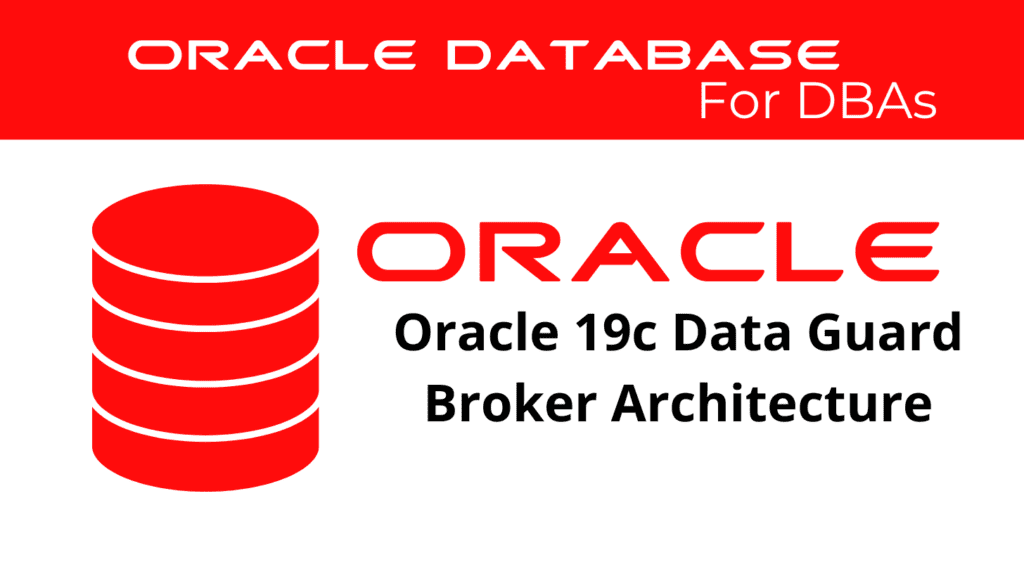
Understanding the architecture of the Data Guard broker in Oracle 19c is crucial for effective database management and high availability. The DataGuard broker simplifies the configuration and management of standby databases, ensuring that your primary database can quickly switch to a standby role in case of failure.
What is the Data Guard Broker?
The DataGuard broker is a distributed management framework that automates and centralizes the creation, maintenance, and monitoring of DataGuard configurations. It manages the entire Data Guard configuration, including both primary and standby databases, using a single interface.
Key Components of DataGuard Broker Architecture
Management Interface
The DataGuard broker provides two main interfaces for management: the Data Guard command-line interface (DGMGRL) and the Oracle Enterprise Manager. These interfaces enable administrators to configure, monitor, and manage Data Guard configurations efficiently.
Configuration Files
The DataGuard broker uses configuration files to store the metadata about the Data Guard configuration. These files are essential for the broker to understand the roles and relationships between the primary and standby databases.
Monitoring and Alerts
The broker continuously monitors the health and status of the DataGuard configuration. It provides alerts and notifications for any issues, ensuring that administrators can take immediate action to resolve problems.
Data Guard Broker Processes
DMON Process
The DataGuard broker uses the DMON process to manage and monitor all aspects of the DataGuard configuration. The DMON process runs on both the primary and standby databases, ensuring that changes in the configuration are propagated to all databases in the Data Guard setup.
Communication Between Databases
The DataGuard broker relies on Oracle Net Services for communication between the primary and standby databases. This communication is crucial for the synchronization of configuration changes and status updates.
📢 You might also like: Oracle 19c Data Guard Broker Components (Category: DataGuard)
Configuring Data Guard Broker
Enabling the Broker
To enable the Data Guard broker, you must set the DG_BROKER_START initialization parameter to TRUE. This parameter activates the DMON process, allowing the broker to manage the DataGuard configuration.
ALTER SYSTEM SET DG_BROKER_START=TRUE SCOPE=BOTH;
In a Real Application Clusters (RAC) environment, it is crucial to ensure that the DataGuard broker configuration files are stored in a shared location accessible by all nodes in the cluster. Set the DG_BROKER_CONFIG_FILE1 and DG_BROKER_CONFIG_FILE2 parameters to point to this shared location.
ALTER SYSTEM SET DG_BROKER_CONFIG_FILE1='/shared/disk/dg_broker1.dat' SCOPE=BOTH;
ALTER SYSTEM SET DG_BROKER_CONFIG_FILE2='/shared/disk/dg_broker2.dat' SCOPE=BOTH;
Creating a Broker Configuration
You can create a new Data Guard broker configuration using the DGMGRL command-line interface. The CREATE CONFIGURATION command initializes the configuration and adds the primary and standby databases.
DGMGRL> CREATE CONFIGURATION 'MyDGConfig' AS
PRIMARY DATABASE IS 'PrimaryDB'
CONNECT IDENTIFIER IS 'PrimaryDB_DG';
Adding Standby Databases
After creating the configuration, you can add standby databases to it using the ADD DATABASE command.
DGMGRL> ADD DATABASE 'StandbyDB' AS CONNECT IDENTIFIER IS 'StandbyDB_DG';
Managing Data Guard Broker Configuration
Switchover and Failover
The Data Guard broker simplifies switchover and failover operations. Using the DGMGRL interface, you can perform these operations with a single command, minimizing downtime and ensuring data consistency.
Monitoring the Configuration
The SHOW CONFIGURATION command in DGMGRL provides a detailed view of the current status of the Data Guard configuration, including the health and roles of each database.
DGMGRL> SHOW CONFIGURATION;
Conclusion
The Broker architecture in Oracle 19c provides a robust framework for managing high availability and disaster recovery. By centralizing the management of primary and standby databases, it ensures that your database environment is resilient and capable of handling failures efficiently. Implementing the Data Guard broker effectively will enhance your database management strategy and ensure data protection across your organization.
See more on Oracle’s website!
Be Oracle Dataguard Certified Professional, this world is full of opportunities for qualified DBAs!





